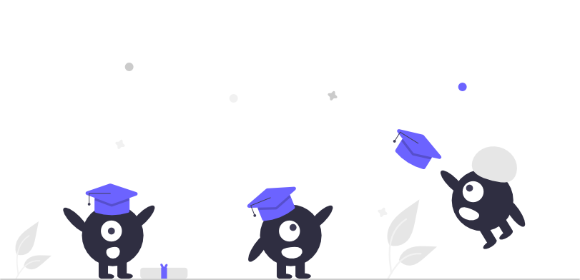AI trends in education: now and in the future

How is AI used in education?
Artificial intelligence (AI) is no longer a futuristic concept found only in sci-fi movies. It has now become a central part of our everyday lives, from our smartphones to our smart home devices (Alexa...).
AI is driving massive changes in a wide range of industries, with education being one of the most impacted sectors. It's transforming the way teachers teach, students learn, and schools operate. And only time will tell how far it will go in revolutionizing the education sector.
The global AI in education market size reached $4.8 billion in 2024 and is projected to reach a staggering $75.1 billion by 2033, which means we can expect to see significant progress over the coming years.
Let's take a look at AI in education: how it's being used now, and where it's heading in the future.
Jump to:
How is AI being used in education?
AI in education takes on many forms, benefiting students, teachers, and administrative staff alike. It can be used in the classroom - and at home - for any age group, which is what makes it so exciting, with so much potential!
Here are five of the top examples of how AI is being used in education:
- Helps with grading
So much of teachers' time is traditionally spent doing administrative tasks like grading. AI-powered platforms like Gradescope now streamline this process by automating grading. They also provide data insights, helping teachers to identify where students are struggling, so they can offer more targeted support.
- Assists with administrative tasks
From scheduling classes to managing student enrollment, AI takes care of repetitive administrative tasks. This automation frees up teachers and administrators to focus on higher-value responsibilities, like teaching and supporting students.
- Personalizes learning experiences
AI-powered tools like Century Tech and DreamBox Learning create personalized learning pathways for students by analyzing individual progress, identifying areas of weakness, and adapting content in real time. This makes learning more effective and engaging.
- Improves accessibility
AI tools enhance accessibility for students with disabilities and those from diverse backgrounds. Real-time translation apps, closed-captioning tools, and screen readers powered by AI ensure that education is accessible to everyone, no matter their circumstances.
- Supports content creation
Teachers are busier than ever, but AI is helping lighten the load when it comes to creating learning content. AI-powered transcription platforms like Transcribe save teachers hours typing up lesson notes, providing them with a lesson transcript that they can edit down into easy-to-use learning content - whether that's for students who are off sick or for homework and revision material.
Learn more about the benefits of academic transcription.
- Provides 24/7 assistance
Thanks to AI-powered education software like Brainly, Khanmigo, and even ChatGPT, students have access to 24/7 assistance, helping them tackle homework and revise for exams at their own pace. This kind of on-demand assistance makes self-study more achievable.
Find out more about how students can use ChatGPT for studying.
How has AI improved education?
Advantages for students
With AI programs and apps, students can log in and learn anywhere and anytime. Apps that provide immediate feedback mean that students don't have to wait to find out whether they're on the right track, and since AI can personalize content depending on each individual's ability, students can take more control of their learning and work on subjects that they're struggling with.
Advantages for teachers
Teachers see the same advantages but through a different lens. If students feel more in control and responsible for their studies, they'll be more engaged and more willing to learn. And just as students can work on their problem areas of study, teachers can use this information to understand what they need to do more of in class.
It's no secret that young people spend a lot of time on their phones. And sometimes if you can't beat them, you have to join them! AI has enabled teachers to engage their students and make learning more fun and interactive for everyone involved.
What is the future of AI in education?
The future of AI in education is incredibly exciting, with new advancements rolling out every year. Here are some key trends to watch:
- Even more personalization
As AI systems become more sophisticated, they'll offer even greater levels of personalization. By analyzing vast amounts of data, these systems will adapt to students' unique needs and learning styles faster and more accurately than ever.
- AI literacy for students
With AI becoming widely used across industries, schools are ramping up their focus on AI literacy. Coding and robotics are just the beginning - students are learning about the ethical and practical applications of AI to prepare for the future.
- Virtual reality and simulations
As virtual reality becomes more sophisticated, VR software is likely to be used more and more in schools to give students immersive experiences in different subjects. From conducting virtual science experiments to exploring historical landmarks, VR makes complex topics engaging and hands-on.
- Enhanced teacher support
It's widely agreed that AI won't replace teachers, but it will continue to support them more and more. Tools that assist with lesson planning, classroom management, and student engagement will become more prevalent, allowing teachers to focus on building relationships and fostering critical thinking.
- Ethical AI use in education
As AI becomes more entrenched in education, conversations around ethics, data privacy, and algorithmic fairness are growing louder. Future AI tools will likely come with built-in safeguards to ensure they're used responsibly and fairly.
Final thoughts
AI has already revolutionized education in many ways, and its potential is limitless. From personalized learning to immersive VR experiences, the future of AI in education looks bright for students and teachers alike.
Want to learn more about how AI is transforming everyday tasks? Check out our blog post on AI transcription.